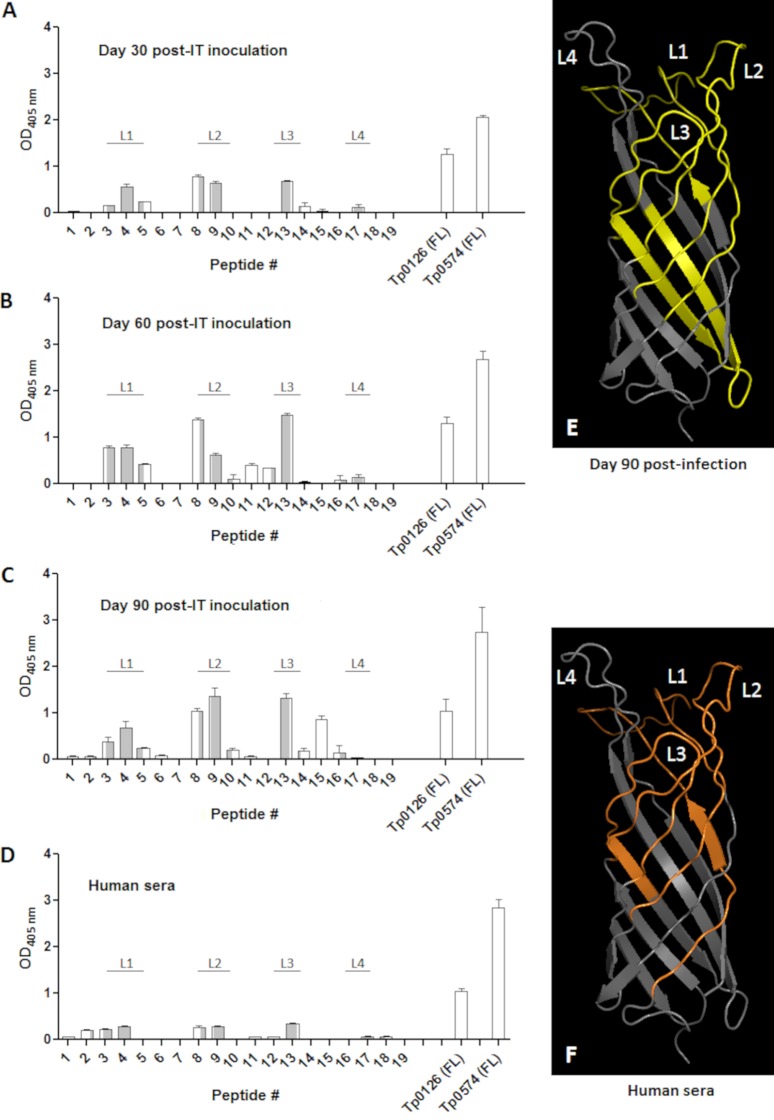FIG 3.
B-cell epitope mapping using synthetic peptides. (A to C) Peptides (20-mers overlapping by 10 aa) based on the Tp0126 sequence (Table 1) were used along with sera collected at day 30 (A), day 60 (B), and day 90 (C) from rabbits infected i.t. with the Nichols strain of T. pallidum. Bars represent the mean OD readings after background (from no-antigen wells) subtraction. (D) Reactivity of sera (n = 7) from latent syphilis patients. Bars relative to peptides that contain putative surface-exposed amino acids are in gray, while bars relative to peptides that map onto the predicted Tp0126 β-scaffolding are in white. Gray/white bars contain amino acids that map to both the predicted surface-exposed loops and the scaffolding. (E) Tp0126 sequences recognized by day 90 immune rabbit sera, highlighted in yellow in the Tp0126 three-dimensional (3D) model. (F) Tp0126 sequences recognized by human sera. Sequences are highlighted in orange in the Tp0126 3D model. The Tp0126 3D model was generated using I-TASSER as described previously (24). FL, full-length peptide.

